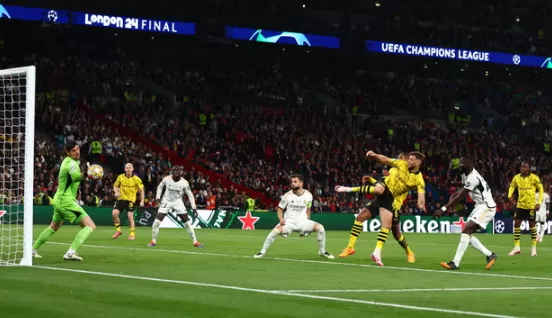The increasing demands placed on elite footballers have sparked widespread concerns, raising the question of whether a strike could be on the horizon. Many high-profile players have voiced their frustrations publicly about their heavy workload, suggesting it is a topic of serious private discussions. However, organizing such a strike presents a significant challenge. While top-tier players are overburdened with matches, those lower down the football hierarchy would likely welcome more games for the financial benefits. This discrepancy in playing time and pay makes uniting players under a common cause difficult.
Moreover, while some fans express frustration over the proliferation of seemingly meaningless games, they are unlikely to support a strike that results in canceled matches. Football fans, who invest time and money into attending games, may not sympathize with athletes earning large sums of money taking industrial action. This lack of unified support is part of the reason football has faced such challenges in organizing resistance to excessive commercialization. The rare exception was the successful protest against the European Super League, where multiple stakeholders came together in opposition.
The Club World Cup as a Target?
Should footballers strike, the Club World Cup could be an ideal target. Its disorganized planning and relatively low significance compared to major tournaments like the Champions League or World Cup make it less emotionally charged for both players and fans. Furthermore, it would be easy for players, particularly those from European clubs, to frame the tournament as an unnecessary addition to an already packed schedule—one imposed without sufficient consultation. While a strike targeting this event seems plausible, it remains uncertain whether such action will materialize.
Differences in Club and International Management
The broader issue of workload ties into management styles, as international coaching differs significantly from club management. Renowned club managers often struggle to adapt to the limited contact they have with players in the international setup. Conversely, some managers excel at the national level without notable club success. Coaches like Lionel Scaloni, Gareth Southgate, and Joachim Löw thrived in international roles despite limited club experience, highlighting how different the two realms can be.
For someone like Mauricio Pochettino, whose coaching philosophy relies on a high-intensity press, adapting to international management could be complex. At the club level, Pochettino has focused on building the required fitness for his style, but with the U.S. men’s national team, this may be less of a challenge. American players, stereotypically known for their fitness levels, might need more tactical and technical refinement rather than conditioning. Given Pochettino’s charisma, securing player buy-in shouldn’t pose a problem, and the U.S. team could still impress at the 2025 Gold Cup despite the uneven performances often seen in pre-World Cup tournaments.
The Role of Club Ownership in English Football
The financial power behind English football clubs has always played a critical role, dating back to the league’s inception in 1888. Even when clubs were founded by churches, schools, or as company teams, local industrialists were already offering players jobs to attract them to their teams. Once professionalism was legalized in 1885, this practice no longer needed to be concealed. By the 1890s, wealthy owners were bankrolling clubs to success, with Sunderland’s early league titles supported by shipbuilder Robert Thompson and mine-owner Samuel Tyzack.
The commercial nature of English football deepened over time, and by 1983, Tottenham Hotspur became the first European club to float on the stock exchange. Today, Premier League clubs operate under squad size regulations, which require at least eight of their 25 players to be “homegrown.” Younger players under 21 are exempt from this total, allowing clubs to nurture talent while maintaining competitive squad depth. While this system generally works, Chelsea’s situation raises questions about the health of such large squads, as numerous players are either loaned out or struggle for game time.
Floodlit Football: From Experiment to Essential
Floodlit football, now an iconic feature of the sport, was not always a sanctioned part of the game. The first recorded attempt at a floodlit match occurred in 1878 at Bramall Lane, Sheffield, where 20,000 spectators watched a game under four 8,000-candlepower lamps. However, the lighting was insufficient, and around 6,000 fans snuck in without paying. For many years, floodlit games were viewed as experimental and unofficial.
It wasn’t until the Arsenal manager Herbert Chapman saw floodlit football in Belgium in the 1930s that the idea began to gain traction in England. Arsenal installed floodlights at Highbury, but official floodlit matches weren’t approved until 1951. Arsenal’s friendly against Hapoel Tel Aviv marked the first game under the lights, a 6-1 victory. Soon after, floodlit friendlies between English clubs and European teams became popular, culminating in the first league match under lights in 1956 between Portsmouth and Newcastle, despite technical difficulties.
Today, floodlit football is a beloved aspect of the sport, creating an atmosphere where the pitch becomes the glowing focus of attention. But the history of its adoption illustrates how innovations in football often meet initial resistance before becoming integral to the game’s fabric.
Related topics:
- New Zealand Takes Commanding 3-0 Lead in America’s Cup After British Penalty
- Ruth Chepngetich Breaks Marathon World Record in Chicago
- Nedd Brockmann’s Agony-Filled 1,000-Mile Charity Run Raises $1.3M

